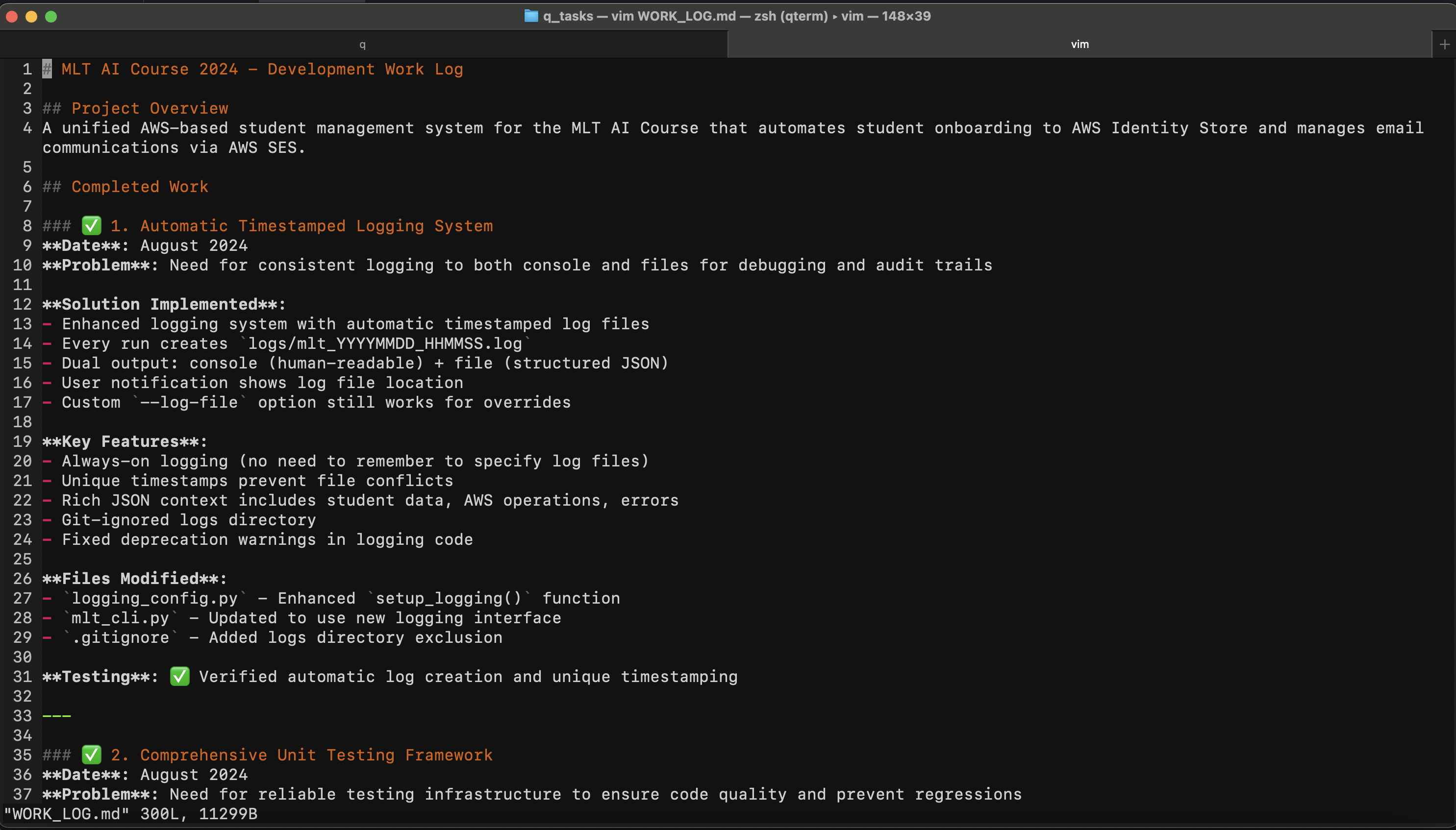The Sunset of NVIDIA GameStream
NVIDIA ending GameStream Support

How I turned trial‑and‑error into a repeatable workflow
Here’s my take after two years of living with generative AI in my engineering workflow:
GenAI is a powerful tool in the hands of experienced users. For everyone else, it can serve as an advanced search engine — but without care, it becomes a crutch that leaves you with code you can’t maintain.
I’ve learned this the slow way. My early attempts with CodeWhisperer were equal parts fascination and frustration. Every three months, I’d revisit AI coding assistants, hoping they’d grown up a bit. Now, in August 2025, I use GenAI nearly every day — but in a very deliberate way.
Over the last two years, my AI‑assisted work has settled at about 20 % of my output. That slice covers:
Where I don’t use it: Complex production‑critical code or application business logic. Those still require humans to perform it.
An example of this workflow in action is my AWS Student Management System, built for the MLT AI Course.
Before: The project was low‑priority, hacked together, and littered with rough scripts.
After: With AI assistance, I cleaned it up, added robust unit tests, and covered edge cases — all while multitasking with family life.
The caveat: The AI introduced multiple subtle bugs, all caught in code review (as diffs while it was working). Without my supervision, it would have broken functioning code and never caught it.
Let’s get this straight: there’s no universal “safe” way to share code with GenAI. I treat anything I paste in as potentially visible outside my control. My mitigations:
Your takeaway: Have your own plan. If you handle proprietary IP or sensitive data, think about what you share, where, and under what terms.
This is the repeatable method I wish I’d had when I started. It’s portable — use it with any assistant, IDE plug‑in, local model, or CLI tool.
1. Define the Idea
- Describe your goal in detail, enough to set direction for the LLM.
2. Idea Refining / Clarifying Requirements
- Create `tasks/initial_design.md`.
- Let the AI ask up to 10 questions to refine the scope.
- Record answers in the file.
3. Create a Plan
- Based on the design, create `tasks/plan.md` with Goal, Prompt, Notes, Expected Output.
- For code tasks:
- Write unit tests for success criteria.
- Run tests before considering a task “done”.
- Update the plan as you progress.
4. Start a new session
- Pass both `initial_design.md` and `plan.md` into the AI.
This extra Idea Refining step alone has saved me hours of back‑and‑forth correcting wrong assumptions.
No matter the tools — lately, Microsoft 365 Copilot for chat history and mobile accessibility and AWS Q CLI for direct computer iteration (filesystem editing, runs scripts and more through Model Context Protocols (MCPs)) — my role stays the same:
When the AI veers off, I intervene early rather than letting it spiral.

| Risk | Reality | Mitigation |
|---|---|---|
| Hallucinations / broken code | Happens more than you’d think | Have the LLM test itself before passing claiming success on the task. It can automatically continue the task using errors from failed tests to fix its work before claiming victory. Works really well in the Q CLI workflow since it can execute things and read the results |
| Over‑reliance | Skills atrophy without practice | Regular manual problem‑solving sessions |
If you made it this far try my prompt workflow on your next project. Adapt it, and, improve it — but don’t skip the supervision. Let me know how it goes.
And if you want more of these deep‑dives, subscribe to my newsletter. One thoughtful email per month. No spam. Just updates on tech topics, ongoing projects, and fresh videos.